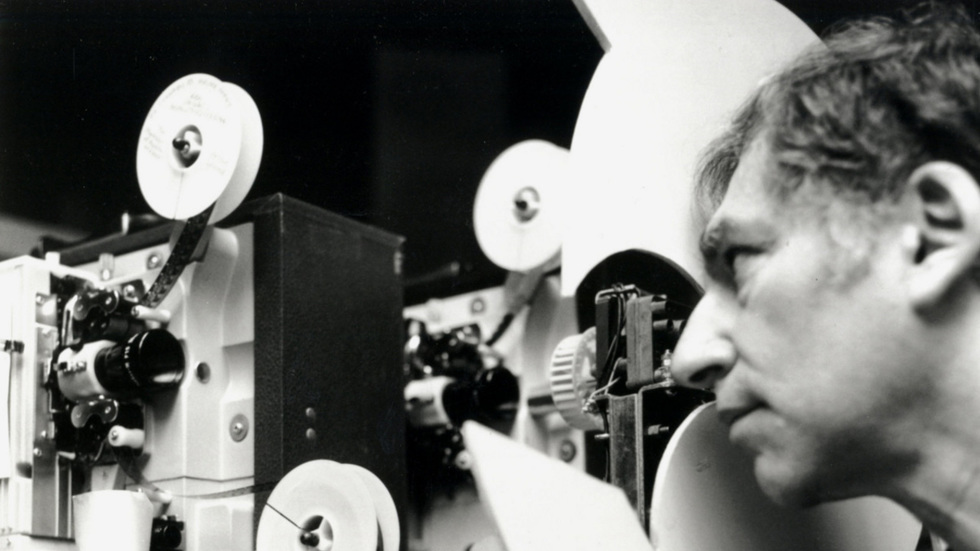
BY JUSTINE MCCULLOUGH |
MUST SEE: Experimental Films by New York Avant-Garde Pioneer Ken Jacobs
Sixty years after making it, Ken Jacobs restores his first film, Orchard Street, to its original 27-minute length. It will screen during a live event with the filmmaker at MoMI’s First Look Festival on Sunday, January 10, at 1:30 p.m.

One of America’s most important experimental filmmakers, Ken Jacobs has spent the past half-century exploring the capabilities of film. Utilizing a range of materials and techniques including found footage, 3-D film, and projector-performances, his impulse-driven explorations illuminate the surrounding world while presenting new ways of viewing film.
This weekend four films by Jacobs will be presented at the Museum of the Moving Image as part of the First Look Festival. All are products of Jacobs’ impetus to record fascinating subjects and present them in innovative ways. “Something has to be visceral in order to be interesting for me,” Jacobs told Tribeca. “I look at what’s there and as I am looking, I see possibilities of extending something or dramatizing something or just going through some other territory I’ve never been before that I want to explore.”

Through his work, Jacobs forces viewers to look at the world and at film in a new way. Star Spangled to Death (1956-2004), arguably Jacobs’ masterpiece, is a sweeping, politicized view of 20th-century politics and culture, constructed of nearly 7 hours of everything from archival footage to performances by Jack Smith and Jerry Sims. Tom, Tom, The Piper’s Son (1969) dismantles and reconstructs a short film of the same name from 1905 - slowing it down, pausing certain frames, replaying various sequences, and isolating and zooming in on certain areas of the frame. These projects reveal a specific interest in illuminating, and, in some cases, creating depth, while also revealing what film is unable to depict at the regular speed of 24 frames per second. “I am interested in space and interested in all these strange things that happen on the frame that are invisible when shown normally,” Jacobs explains.
Having studied painting in the 1950s with Hans Hofmann, Jacobs was profoundly influenced by the tenets of Abstract Expressionism, most importantly the notion that a picture should represent depth and suggest form rather than depicting any sort of identity. This is particularly evident in his development of the Nervous System performances, which utilize two simultaneous projectors showing footage at various speeds to illuminate what is hidden when a film is shown normally. The experiential quality of these performances is expounded by the Nervous Magic Lantern performances, which combine live projections with sound and music by experimental musicians such as Aki Onda.
In recent years, Jacobs has increasingly utilized 3-D film in his ongoing experimentations with depth and form. Three of the films being screened this weekend are 3-D films from 2015 - I’m Telling You, Hydroelectric Dam, and The Lackadaisical Speed of Light.
Hydroelectric Dam was filmed on location in Canada, and according to Jacobs, it said to him, “Film me. But I wouldn’t have filmed it in 2-D. It would not have interested me.” Specifically, what interested Jacobs about filming Hydroelectric Dam in 3-D was the possibility of revealing depth. “The depth events are the real events,” he explained. “Not just the wave or the movement, but the really bizarre things take place in depth. The star actors are the depth events.”
Born in Brooklyn in 1933, Jacobs has lived in Lower Manhattan for decades, working closely with his wife and creative collaborator, Flo Jacobs. Their immediate locale frequently figures into the films, including three of the films being screened this weekend - Orchard Street, I’m Telling You, and The Lackadaisical Speed of Light, a 3-D film consisting of footage of the New York City subway. The film is shown at varying speeds with pauses to show, as Jacobs explains, “the things lurking in a normal movie shot. Here, because they are in 3-D, they become monstrous.”

Orchard Street is Jacobs’ very first film, originally filmed in 1955. Its screening at First Look will mark the first time it has been shown at its full length of 27 minutes, which in the past year Jacobs “rescued from a drastically cut version.” Shot in color with no sound, the project was filmed on location as an observation of the street, sidewalk, and inhabitants of what was primarily a Jewish area in the 1950s, just a decade after World War 2. In filming Orchard Street, Jacobs was not just documenting his own neighborhood, but what it represented beneath the surface. Orchard Street in 1955 is a place where an old woman in rags sells bread, signs advertise knishes, young girls jump rope, and a homemade sign commemorating the Dodgers hangs from a tenement fire escape. It is also a painful reminder of the horrors that many of these people had endured in Nazi-occupied Europe. The neighborhood was “a living history,” Jacobs explains. “That’s what I wanted to document. It was a place to painfully touch into this history.”
I’m Telling You similarly takes place in the Lower East Side, just a few blocks away from where Orchard Street was filmed, but in 2015. The 3-D footage depicts two elderly men having a conversation on the sidewalk near Grand and Essex Streets. “They saw I was filming it, and somehow accepted it,” says Jacobs. “I intruded into their lives.” As Jacobs explains it, he happened upon the conversation and began filming it while he was out one day with Flo (who can be seen at one point in the film through the window of the storefront). The neighborhood itself has changed profoundly since the 1950s - there are more gourmet coffee roasters than knish stands, and tony art galleries dot each block - yet artifacts from the time of Orchard Street remain. “These old guys were remnants of people that populated Orchard Street in [the 1950s],"Jacobs notes. Asked why he filmed these people in particular, Jacobs says, “My history is their history.”
The screening and live event with Ken Jacobs is scheduled for Sunday, January 10, at 1:30 p.m. Tickets may be purchased online and include same-day admission to the Museum of the Moving Image.
Orchard Street, 1955/2015, 27 minutes, silent. US premiere.
I’m Telling You, 2015, 12 minutes, 3-D. World premiere.
Hydroelectric Dam, 2015, 25 minutes, 3-D. World premiere.
The Lackadaisical Speed of Light, 2015, 19 minutes, 3-D.

